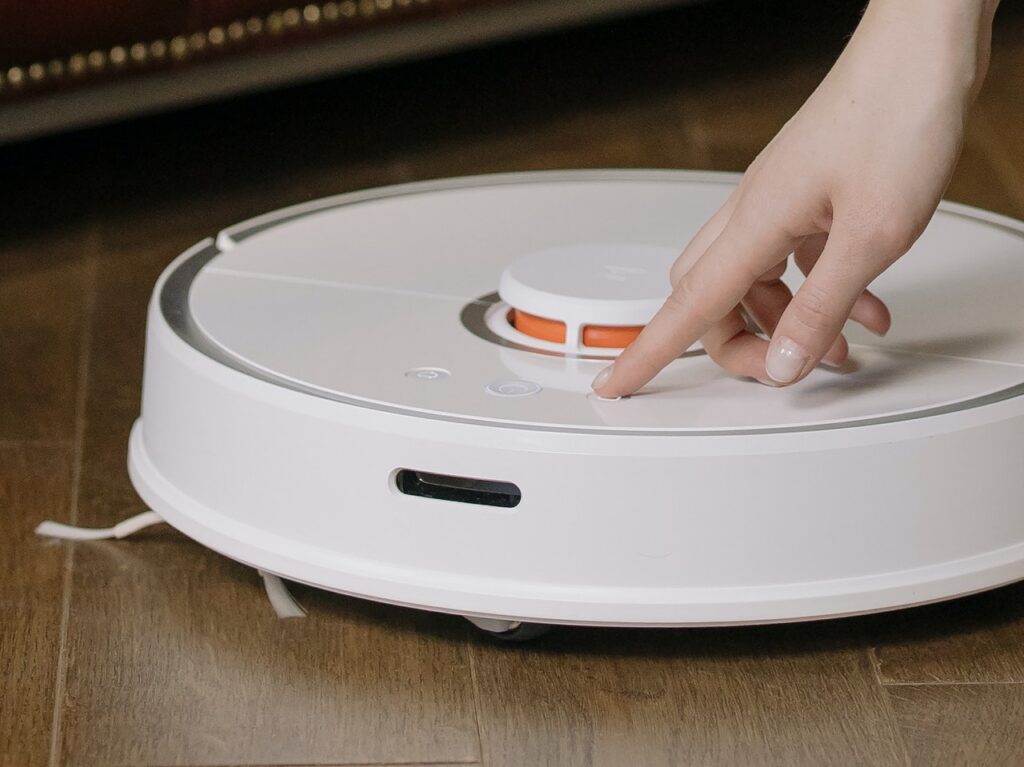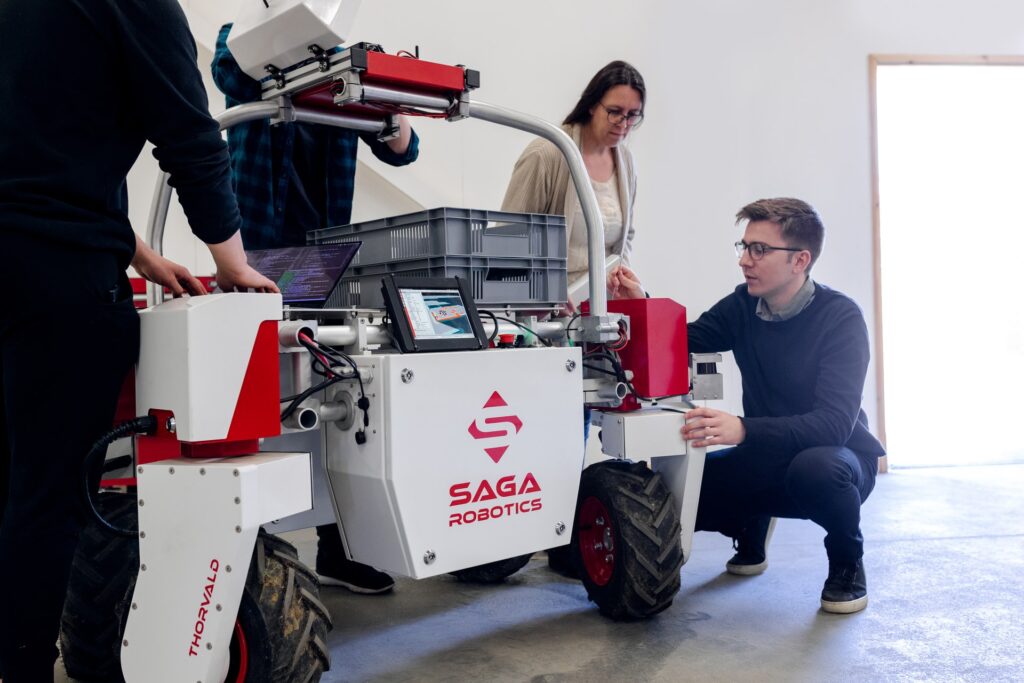What is Robotics Engineering
Robotics is an interdisciplinary research area between computer science and engineering. Robotics involves design, construction, operation, and the use of robots. The goal of robotics is to design intelligent machines that can help and assist humans in their day-to-day lives and keep everyone safe. Robotics draws on the achievements of information engineering, computer engineering, mechanical engineering, electronic engineering and others.
Robotics engineers work in the science of robotics, or flexible automation. Most robots are “manipulators”—machines devised to function in place of a human. Some robots function as “walking” machines, or tele-operators, using remote control or sensory manipulators. Microprocessors, which are very small computers, direct most robots in their tasks.
Robotics engineers, like any other professions in the engineering discipline, will need to be strong in math and sciences. However, most people think that engineers are just whizzes at math and science from the get-go, but that’s rarely ever the case. For most engineers, at least the ones that complete their degrees, they aren’t the people that are best at math naturally, they’re the ones that stuck it out and put in the hard work.

All that said, starting the work on developing a good mathematics background starts in primary or high school. You’ll want to work to place in advanced math classes if you can and possibly even start or join in a robotics club at your school. Robotics, like coding, is one of the interesting technical paths that you can gain experience in with little formal education background.
History of Robotics Engineering
Where did the term robot come from? The word robotics was inadvertently coined by science fiction author Isaac Asimov in his 1941 story “Liar!” Science fiction authors throughout history have been interested in man’s capability of producing self-motivating machines and lifeforms, from the ancient Greek myth of Pygmalion to Mary Shelley’s Dr. Frankenstein and Arthur C. Clarke’s HAL 9000. Essentially, a robot is a re-programmable machine that is capable of movement in the completion of a task. Robots use special coding that differentiates them from other machines and machine tools, such as CNC. Robots have found uses in a wide variety of industries due to their robust resistance capabilities and precision function.
British robotics pioneer William Grey Walter invented robots Elmer and Elsie that mimic lifelike behavior using elementary electronics in 1948. They were tortoise-like robots that were programmed to find their charging stations once they started running low on power.
In 1954 George Devol invented the first digitally operated and a programmable robot called the Unimate. In 1956, Devol and his partner Joseph Engelberger formed the world’s first robot company. In 1961, the first industrial robot, Unimate, went online in a General Motors automobile factory in New Jersey.
With the rise of the computer industry, the technology of computers and robotics came together to form artificial intelligence; robots that could learn. Commercial and industrial robots are now in widespread use performing jobs more cheaply or with greater accuracy and reliability than humans. Robots are used for jobs which are too dirty, dangerous or dull to be suitable for humans.

Robots are widely used in manufacturing, assembly and packing, transport, earth and space exploration, surgery, weaponry, laboratory research and mass production of consumer and industrial goods.
Robotics Engineering Education
As for college education, you’ll definitely need to get an electrical or mechanical engineering degree. Some colleges have robotics engineering degrees, but most don’t. The only benefit that these more specialized degrees provide over general mechanical engineering degrees are just that, your schooling is more specialized in what you’re hoping to work in down the line. However, that can be a double-edged sword. Over-specializing in college can limit the scope of what jobs you can get down the line. You’ll want to evaluate what path is right for you.

Electronics engineers turned robotics engineers will be more adept at the coding and electronics facets of robots. Mechanical engineers will be more adept at the mechanical function and design of robotic machines. With that being said, either will do if you hope to become a robotics engineer.
Job experience is the biggest box you’re going to want to check off the list on your path to becoming a robotics engineer. If possible, try to find an internship during college that will give you practical experience in robotics design. If you can’t find an internship, then make sure some of your extra-curricular projects in college are robotics-based. When applying for a robotics engineering position, what will set you apart is experience, either through a job or personal project.
Robotics Engineering Careers
Jobs
Robotics has been around since the mid 1900s, and in that time various businesses have capitalized on its broad set of useful applications. Manufacturing, health care, energy and mining are among the growing list of industries that effectively use robotics at scale. Technology analysts expect robots’ capabilities and business use to skyrocket in coming years, and eventually permeate the domestic market, i.e. robots in homes.
Those presently working in robotics engineering typically fall into one or more of these 3 skills areas:
- Building: Robotics engineers also work in the hands-on construction of robots, as well as creating the manufacturing tools and processes that will build the robots. Increasingly, these professionals can expect to employ 3D printing platforms like Roboze and 3DP
- Computer Aided Drafting & Design: These engineers design and improve the blueprints for robotic systems, using cutting-edge 3D modeling programs such as AutoCAD, Blender, Inventor and SolidWorks to create plans and schematics
- Regardless of where robotics engineers work, their job role is the same: to develop robots that fulfill functions more efficiently, cost-effectively, faster or safer than humans are able with existing technology
- Research & Development: Robotic systems often require redesign and modification. Robotics Engineers are at the forefront of R&D. Some researchers work in academia, wielding soft skills in critical thinking, analysis and communication to teach others
Salaries
An entry-level robotics engineer with less than 1 year experience can expect to earn an average total compensation (includes tips, bonus, and overtime pay) of $73,789. An early career robotics engineer with 1-4 years of experience earns an average total compensation of $81,330. A mid-career robotics engineer with 5-9 years of experience earns an average total compensation of $92,836. An experienced robotics engineer with 10-19 years of experience earns an average total compensation of $99,000. In their late career (20 years and higher), employees earn an average total compensation of $120,079, according to PayScale.com.
The top respondents for the job title robotics engineer are from the companies Jet Propulsion Laboratory, Bastian Material Handling, LLC and Tesla Motors. Reported salaries are highest at Jet Propulsion Laboratory where the average pay is $175,397. Other companies that offer high salaries for this role include Tesla Motors, earning around $96,477. Bastian Material Handling, LLC pays the lowest at around $80,497. Self-Employed also pays on the lower end of the scale, paying $95,978.

What Do Robotics Engineers Do?
Robotics engineers are responsible for designing, testing, and building robots that are productive and safe to operate as well as economical to purchase and maintain. These engineers use computer-aided design and drafting, and computer-aided manufacturing (CADD/CAM) systems to perform their tasks. Robotics research engineers design robotic systems and research methods to manufacture them economically. Robotics engineers who work for robot manufacturers are sometimes called robotics test engineers or automation system engineers. These engineers apply the robotic system to a particular use on a manufacturing assembly line. They also create an integrated environment between people and machinery.
Responsibilities
To be successful as a robotics engineer you should be technically-oriented and enjoy solving complex challenges. Ultimately, a top-notch robotics engineer should be innovative, open-minded, and an excellent troubleshooter. Some job responsibilities of a robotics engineer include:
- Defining problems, collecting data, and deducing facts and conclusions
- Evaluating and calibrating systems for maximum efficiency
- Maintaining accurate documentation and records
- Programming complex robotics systems
- Reading, writing, analyzing, and interpreting technical procedures and schematics
- Researching, developing and maintaining robotics systems and components
- Troubleshooting robotics systems and applications
- Writing software, building electronics, and designing mechanisms
Skills
Just like any career, robotics demands a unique set of hard and soft skills. You might be good at electronics, but do you have a head for “systems thinking”? Can you make informed decisions in a wide range of different disciplines? Are you an active learner who can communicate ideas effectively?
Good robotics engineers have a range of skills, which support their wide technical knowledge across different engineering disciplines:
- Adaptability and Flexibility
- Artificial Intelligence Basics
- Complex Problem-Solving
- Efficient Solution Design
- Programming Mindset
- Python Programming
- Robotics Savvy
- Systems Thinking
Future of Robotics Engineering
The future of robotics is difficult to gauge because of the rate of innovation. However, it’s predicted that robots will most likely play a greater role in the home and in the business world. Products such as Google Home, Amazon Echo, and Apple’s Siri have grown in popularity in recent years. Smart Homes have also been gaining traction because of their convenience and ability to save on utility bills, increase comfort, and improve security.
By 2040 computing power should make third-generation robots with monkey like minds possible. Such robots would learn from mental rehearsals in simulations that would model physical, cultural, and psychological factors. Physical properties would include shape, weight, strength, texture, and appearance of things and knowledge of how to handle them. Cultural aspects would include a thing’s name, value, proper location, and purpose. Psychological factors, applied to humans and other robots, would include goals, beliefs, feelings, and preferences. The simulation would track external events and would tune its models to keep them faithful to reality.
This should let a robot learn by imitation and afford it a kind of consciousness. By the middle of the 21st century, fourth-generation robots may exist with human-like mental power able to abstract and generalize. Researchers hope that such machines will result from melding powerful reasoning programs to third-generation machines. Properly educated, fourth-generation robots are likely to become intellectually formidable.

That being said, the innovations of new technology will continue to rapidly develop, but not necessarily in the way science fiction predicts. Rather, breakthroughs in automation and programming will continue to improve what humans have been seeking to advance for years: communication, education, and life itself.
If you have anything to add, please feel free to leave a comment down below, and sign up to our newsletter for more of the same content!



